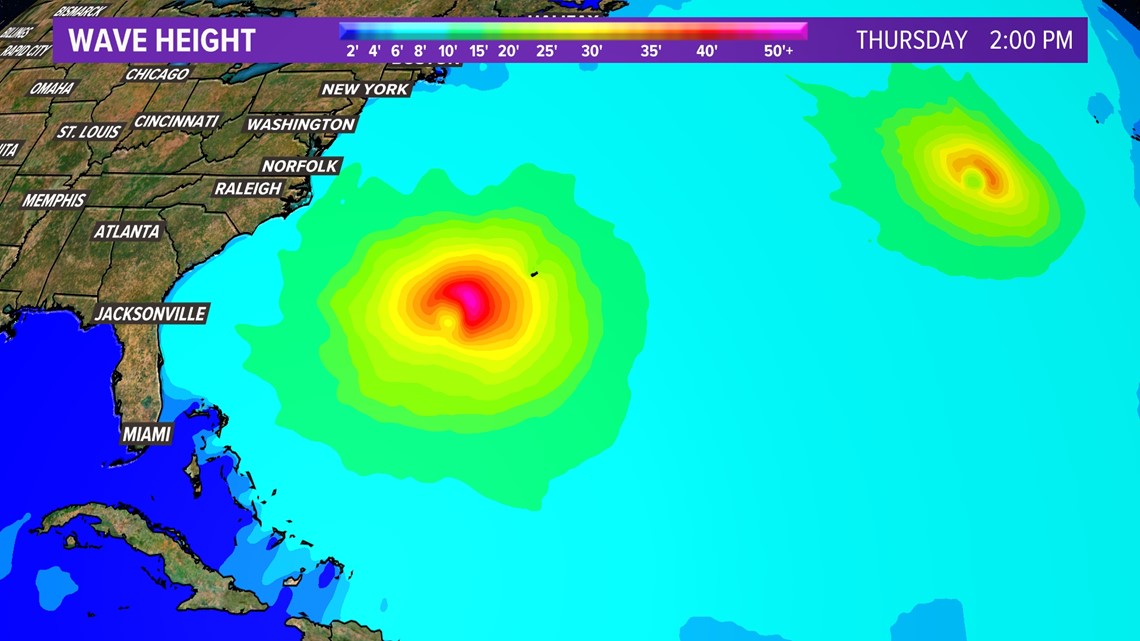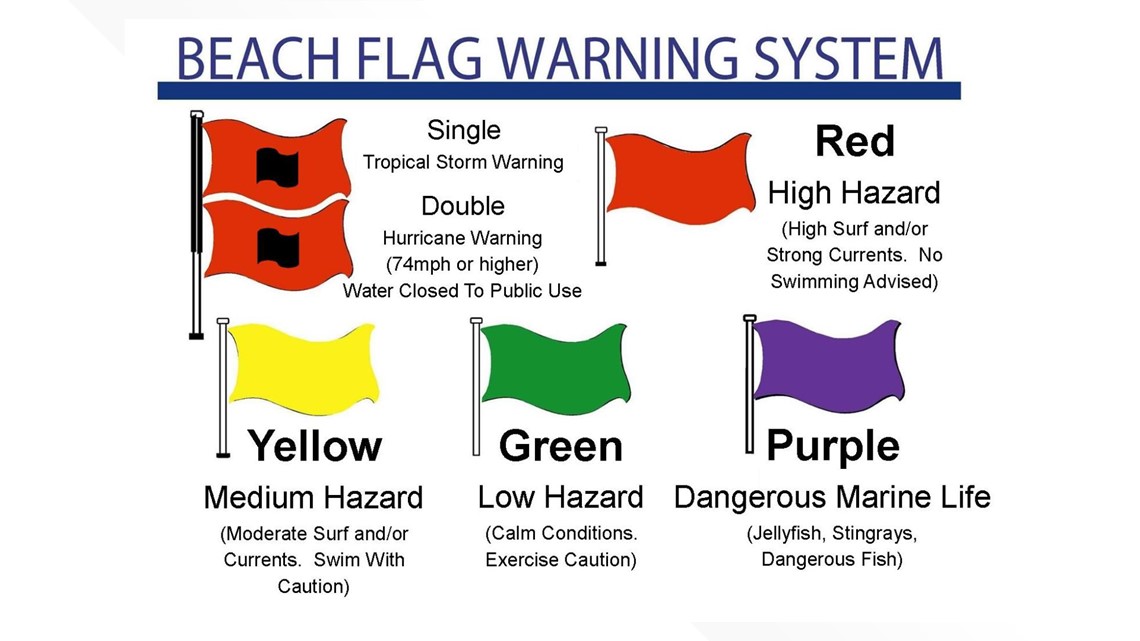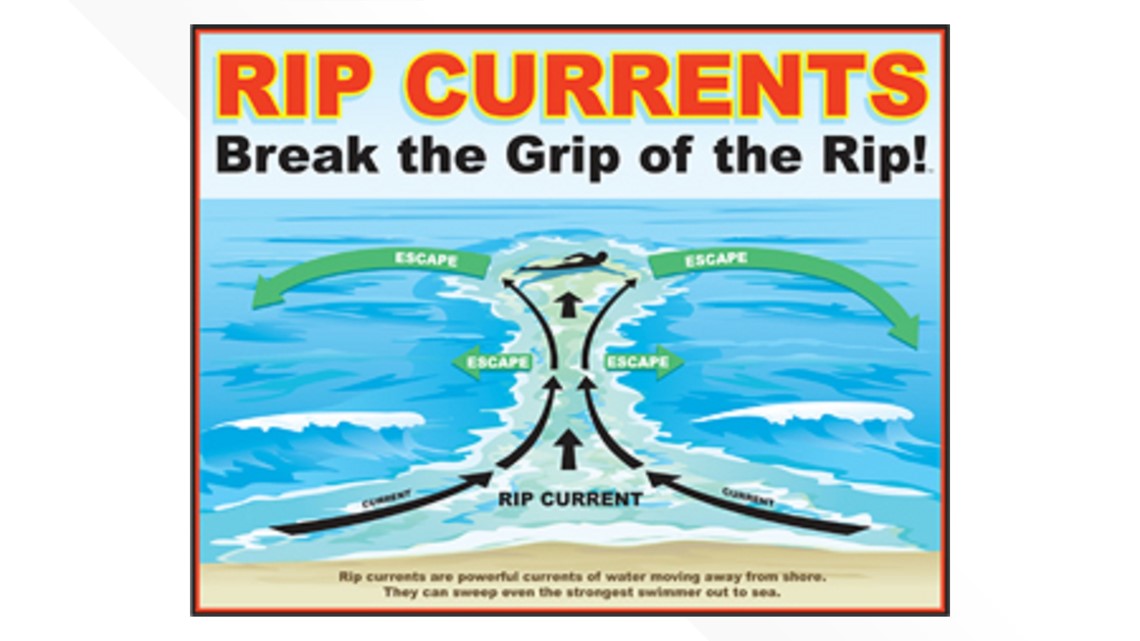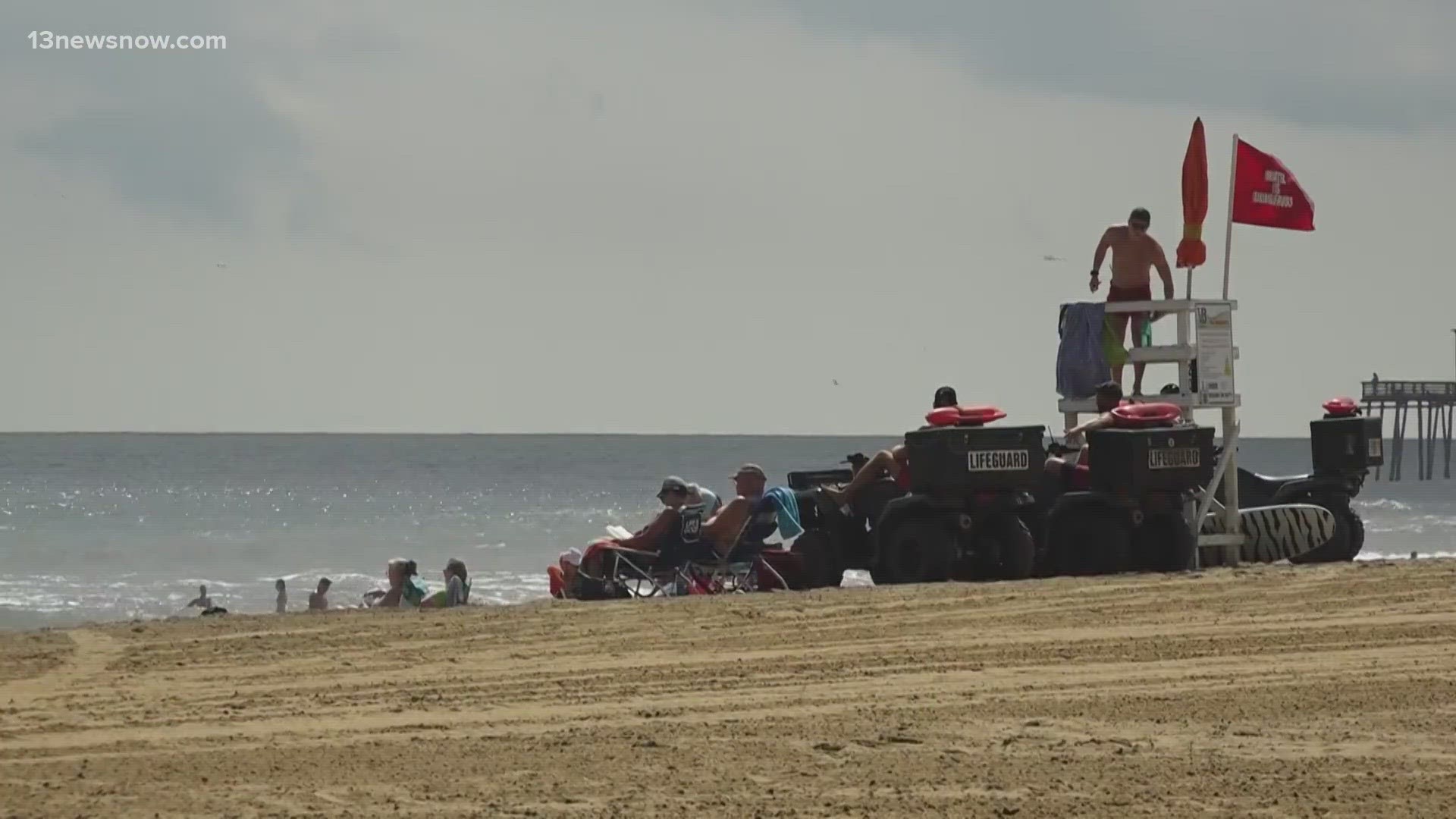VIRGINIA BEACH, Va. — As Hurricane Lee rolls through the Atlantic Ocean later this week, there's a chance of more dangerous waters for beachgoers across Hampton Roads and the Outer Banks.
The storm is expected to stay east of southeastern Virginia and northeastern North Carolina but will likely cause more swells and life-threatening rip currents at the beach.
The water in the Atlantic Ocean is expected to reach up to four to six feet on Wednesday and possibly up to six to 10 feet on Thursday and Friday. Waves in the Chesapeake Bay will be three to four feet Wednesday through Friday, with waves up to four to six feet at the mouth.
A high risk of rip currents will start Tuesday and will continue through the end of the week. Tidal flooding will be minor and there's a possibility of beach erosion with stronger wind gusts.
Surf forecast for Virginia Beach, OBX
According to Surfline, which monitors surf reports and forecasts, Wednesday and Sunday will be the best days to surf across Virginia Beach and the Outer Banks for the next seven days. Saturday could be good at Hatteras Island in North Carolina for experts.
The National Park Service also sent out a warning to Cape Hatteras National Seashore visitors. Ocean conditions are forecast to be dangerous along all beaches this week. That includes large breaking waves, life-threatening rip currents, beach erosion, ocean overwash and coastal flooding.
Visitors are urged to avoid swimming until those conditions improve.
This weekend could see a combination of leftover swells from Hurricane Lee and improving conditions, depending on how the storm plays out. Surfline encourages beginners and newer surfers to stay dry this week.


How to avoid getting caught in Hurricane Lee rip currents
The U.S. National Weather Service defines rip currents as currents of water flowing away from the shore. Certain conditions can cause these currents to move faster. As of Aug. 31, NWS data shows that 76 people have died in surf zones so far this year. The National Weather Service and Coast Guard have some tips for avoiding and surviving rip currents.
Know the warning flags
Some beaches will have warning flags to help beach-goers know the swim conditions. According to the U.S. Coast Guard, there are four types of flags you should know about:
- Green: This means the conditions are calm.
- Yellow: This means the surf or current is moderate. Swim with caution.
- Red: This means swimming isn't recommended because of high surf or strong currents.
- Purple: This means there's dangerous marine life. Some examples are jellyfish, stingrays and dangerous fish.


Spotting a rip current
The Coast Guard says you can find most rip currents by looking for signs of a dark gap that looks like a path through the surf. The water will look darker in the rip current.
If you have polarized sunglasses, they may come in handy.
What to do if you get caught
The NWS recommends staying calm when you get caught in a rip current.
Don't try to swim against the current nor swim to shore. Swim along the shoreline until you can escape the current. When you're free, swim at an angle away from the current toward the shore.
If you need help, face the shore and yell or wave.


Other tips
Check the weather before you go to the beach. 13News Now has the latest forecasts and interactive radar map on our website and inside our app.
The NWS recommends swimming with a friend. If you have a problem while swimming, the other person can help, and vice versa.

